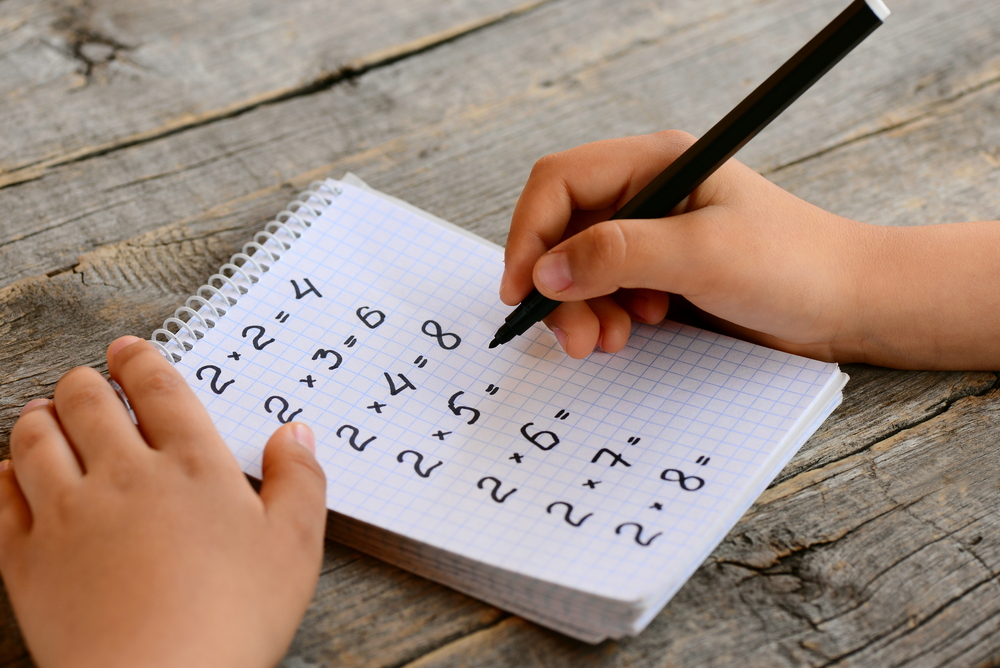Animal Classification Worksheets for Ages 4-7
7 filtered results
-
From - To
Discover engaging Animal Classification Worksheets designed specifically for children aged 4-7. These educational sheets make learning fun and interactive by helping young learners distinguish between mammals, reptiles, birds, and more. Filled with colorful illustrations and easy-to-understand exercises, our worksheets encourage kids to develop critical thinking and early science skills. Perfect for both classroom settings and home education, these activities aim to boost children’s curiosity about the natural world while enhancing their categorization abilities. Visit Kids Academy to download and start fostering a love for science in your child today!
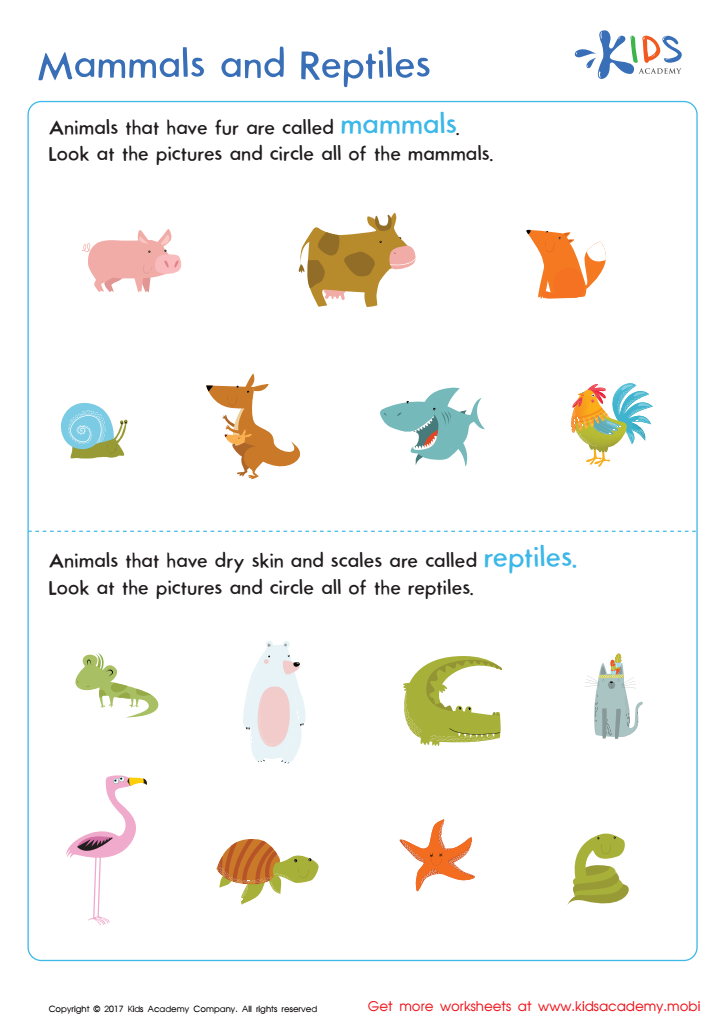

Mammals and Reptiles Worksheet
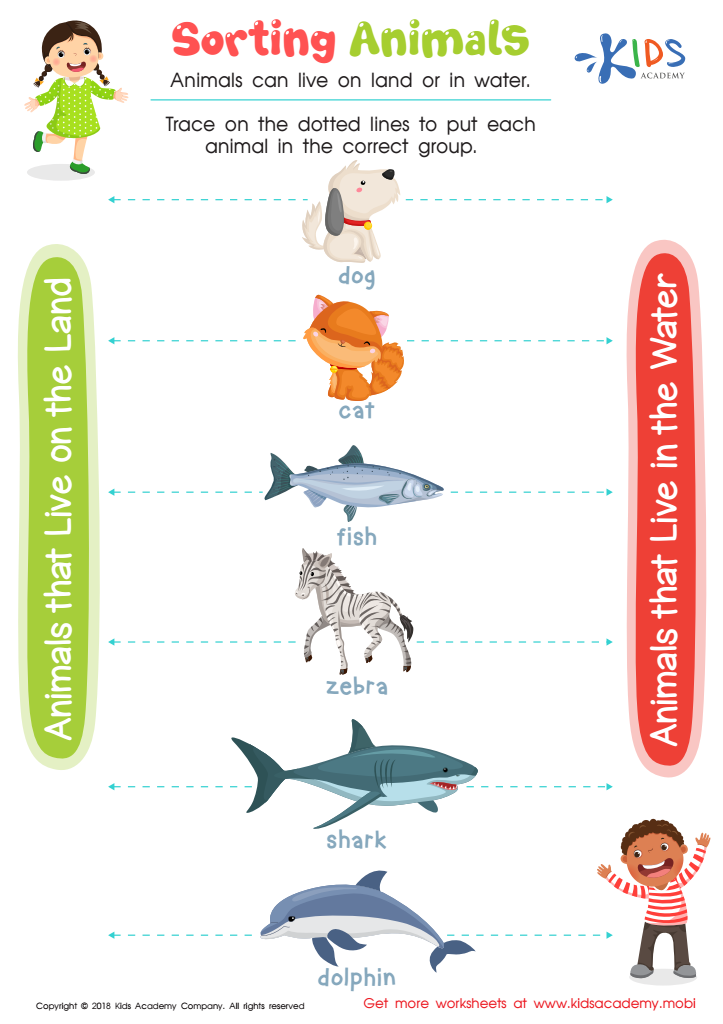

Sorting Animals Worksheet
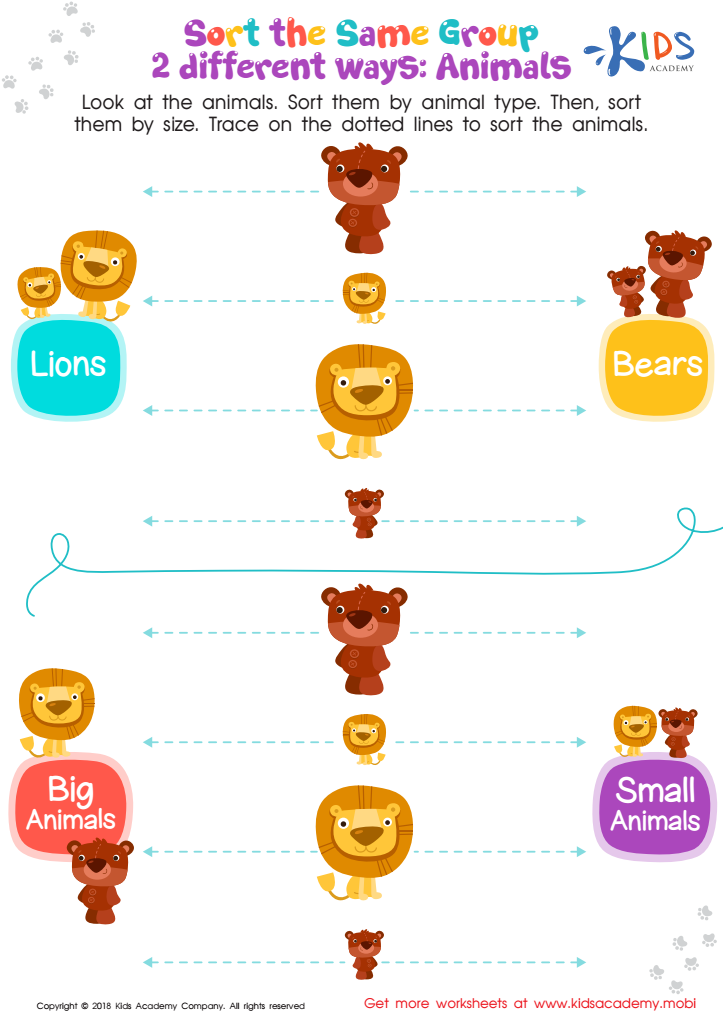

Sort the Same Group 2 Different Ways: Animals Worksheet
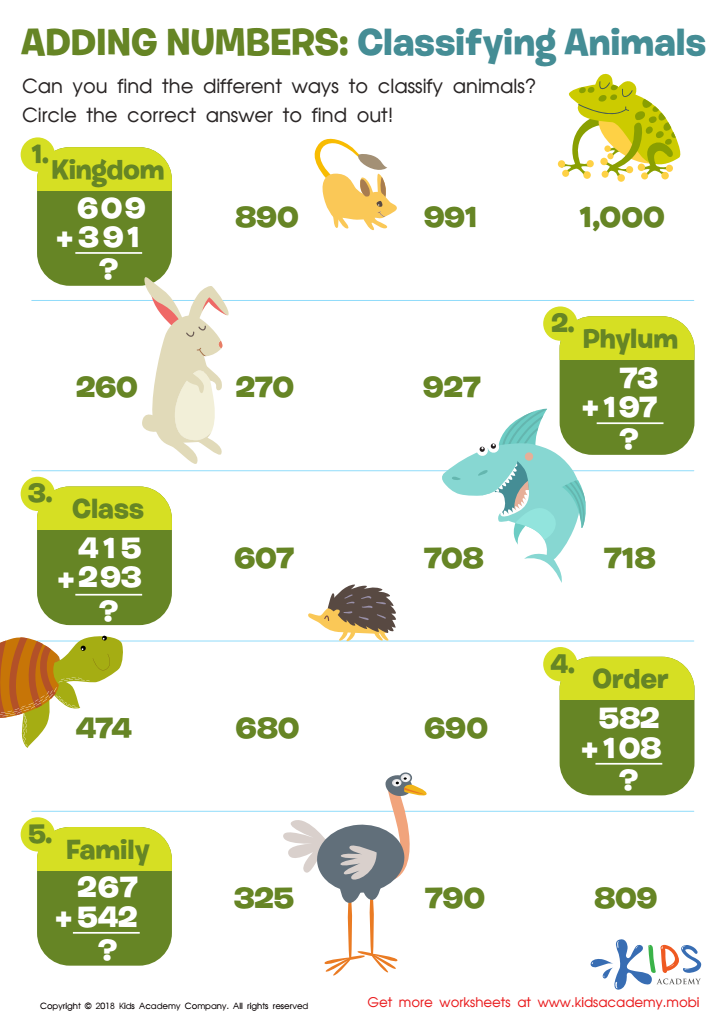

Adding Numbers: Classifying Animals Worksheet
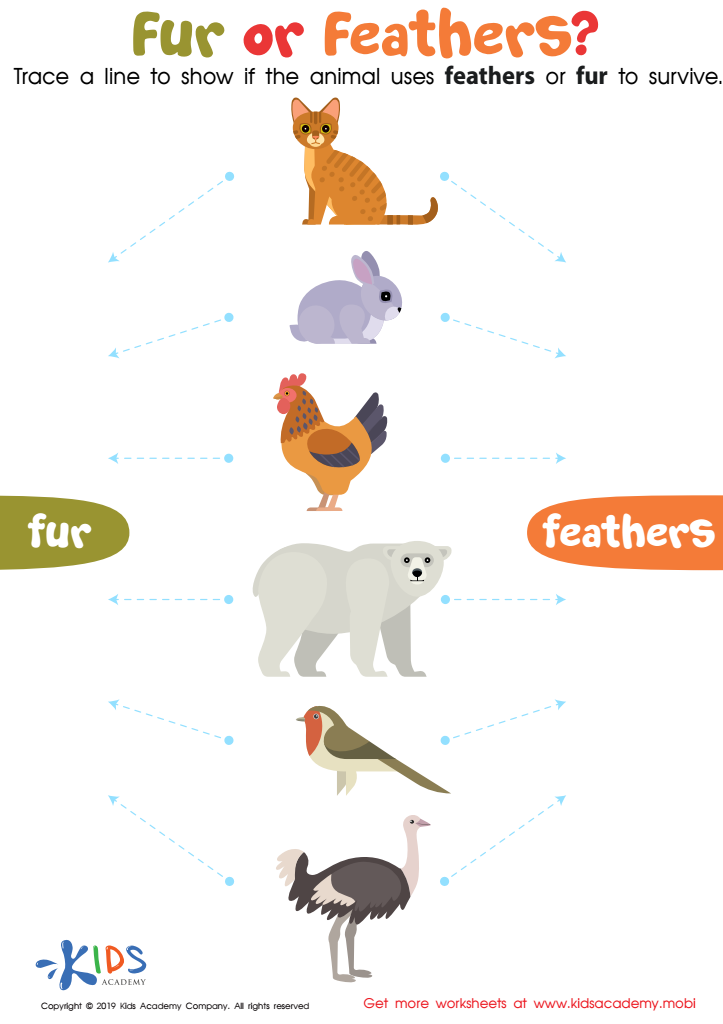

Fur or Feathers? Worksheet
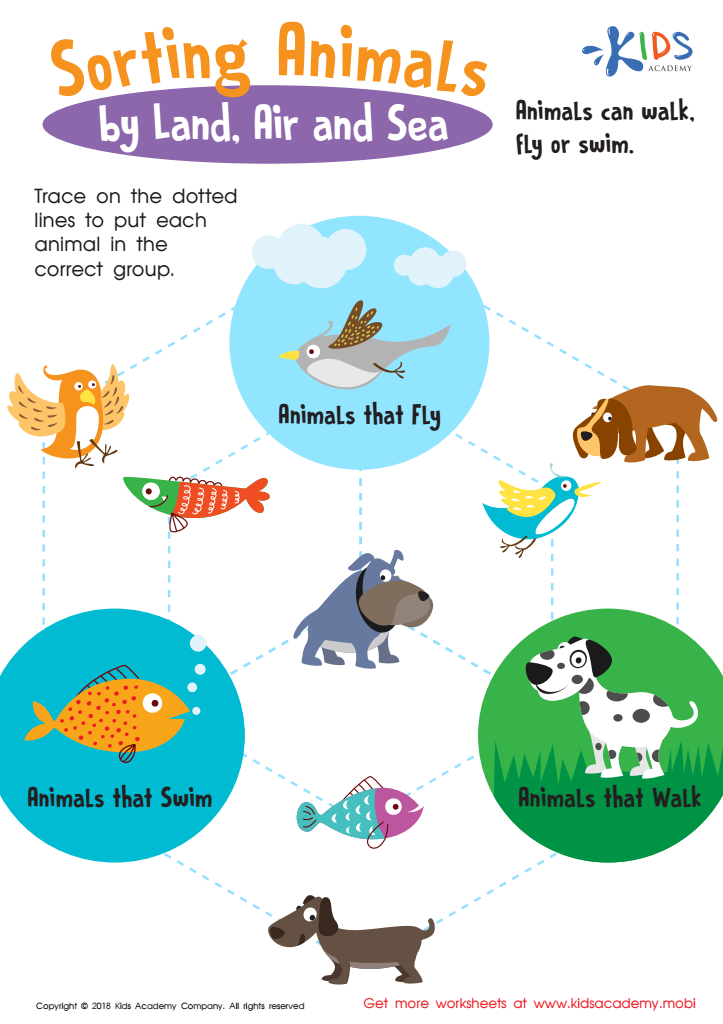

Sorting Animals by Land, Air and Sea Worksheet
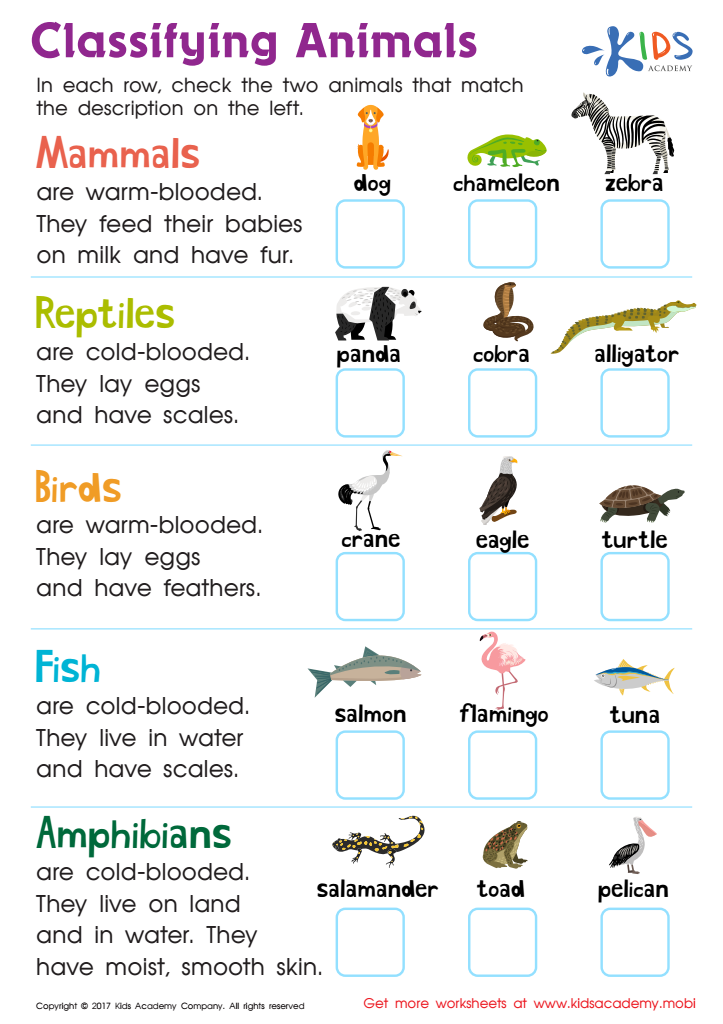

Classifying Animals Worksheet
Introducing animal classification to children aged 4-7 is crucial for several key reasons. Firstly, it fosters a sense of curiosity and wonder about the natural world, which can ignite a lifelong love for science and learning. Young children are naturally curious, and learning about how animals are grouped and classified taps into this innate interest.
Animal classification also builds foundational cognitive skills. It encourages children to observe, compare, and contrast different species, developing their critical thinking and categorization abilities. These skills are not only essential for scientific learning, but also for mathematics, literacy, and problem-solving in general.
Moreover, understanding animal classification helps children grasp basic scientific concepts such as habitat, diet, and physical adaptations. Knowing that fish live in water and birds have wings to fly provides children with concrete examples of diversity in the animal kingdom and helps explain how animals are suited to different environments.
In addition, early education in biology promotes empathy and environmental stewardship. When children recognize that animals have specific needs and behaviors, they are more likely to respect and protect animal habitats. Overall, introducing animal classification to young children sets the stage for responsible and informed future citizens who appreciate the complexity and beauty of the world's ecosystems.

 Assign to My Students
Assign to My Students




%20(1).jpg)


